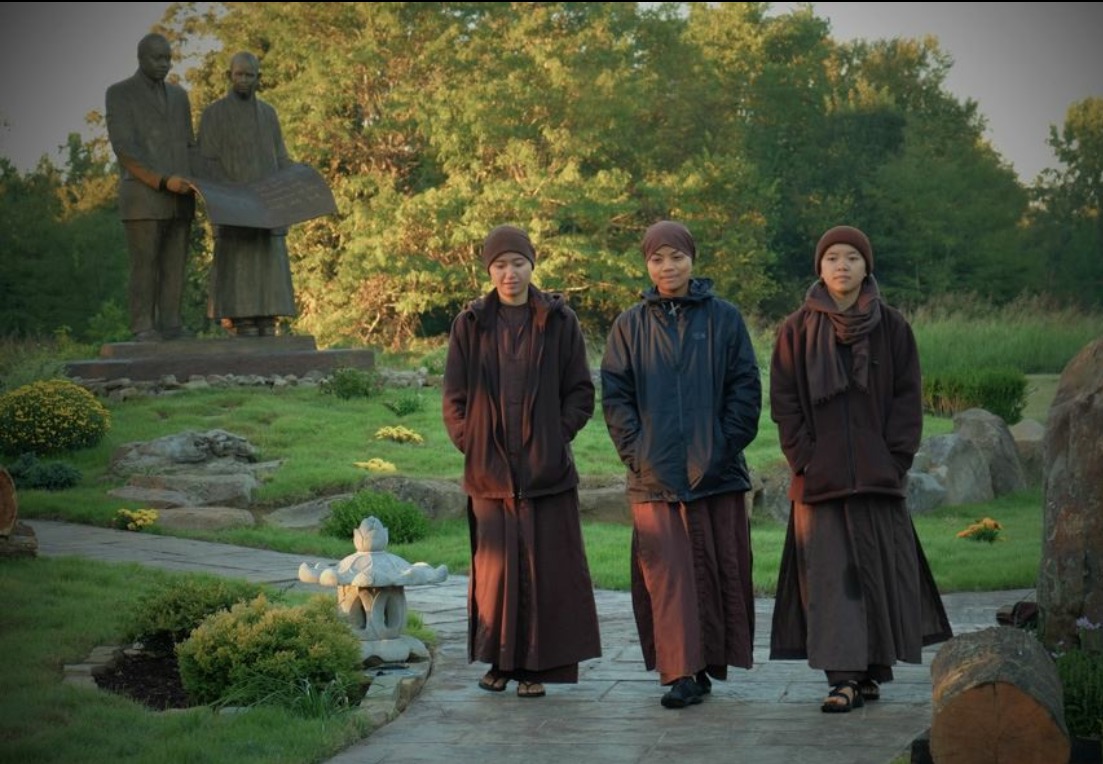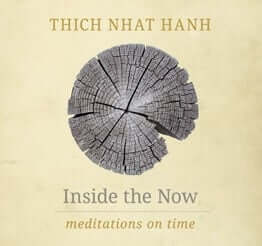
Inside the Now
Meditations on Time
by Thich Nhat Hanh
Parallax Press, 2015
Hardbound, 159 pages
Reviewed by Jerry Braza
With stunning beauty and simplicity, the cover of Thich Nhat Hahn’s book, Inside the Now: Meditations on Time, invites us in to explore the core elements of this Zen master’s life and spiritual gifts.

Inside the Now
Meditations on Time
by Thich Nhat Hanh
Parallax Press, 2015
Hardbound, 159 pages
Reviewed by Jerry Braza
With stunning beauty and simplicity, the cover of Thich Nhat Hahn’s book, Inside the Now: Meditations on Time, invites us in to explore the core elements of this Zen master’s life and spiritual gifts. These teachings are conveyed through calligraphy, poetry, and a spacious two-color format. In this book, the latest written by Thay, we are asked to dive more deeply and personally into the essence of his teachings on the now (in Sanskrit, “that which is being seen”).
Inside the Now is written in two parts: the first highlights Thay’s early formation as a young monk in Vietnam (“The Way In”), and the second (“Now I See”) offers us a profound contemplation of how to live in the now.
In “The Way In,” Thay shares his connection to Vietnamese poets, monks, and authors, whose teachings inspired the development of his core philosophy and practice. In particular, he credits Zen Master Mat The and author Nguyen Trong Thuat for his principal inspiration to become a monk.
In “Now I See,” Thay includes selections from Tale of Kieu, an epic poem by Nguyen Du, recognized as the most significant work in Vietnamese literature and a classic tragic love story, which Thay uses to illustrate how to seize the now and open our hearts to love. We have and are enough for those we love. He encourages us not to wait to be happy. Once we realize happiness is now, we stop busying ourselves to get more while sacrificing our relationships.
Thay’s contemplation on the now reminds us that everything we’ve been looking for is available in the present moment. “This is it,” he writes. What we’ve been waiting for is already here! It’s never too late to transform and clear away misunderstandings, anger, or sadness. With regard to love, Thay poses the question, “If you don’t have the now how can you love?” He then reminds us, “The love you are looking for is the love of solid rock and gold—true love—not mere lust or sensual pleasure.”
Thay also introduces the “magic spyglass,” a tool to recognize our beloved one or soul mate. The magic spyglass helps us in our daily practice to look deeply into the suffering in others, including our ancestors and ourselves. Compassion is born through understanding this suffering, and we become our own true love and discover that the person we’ve been looking for is already here.
Inside the Now can be a companion for the beginning practitioner as well as for long-term devotees of this beloved Zen master. With this book as a guide, I continue to deepen my appreciation for what has inspired my teacher and my connection with those I love and all beings.
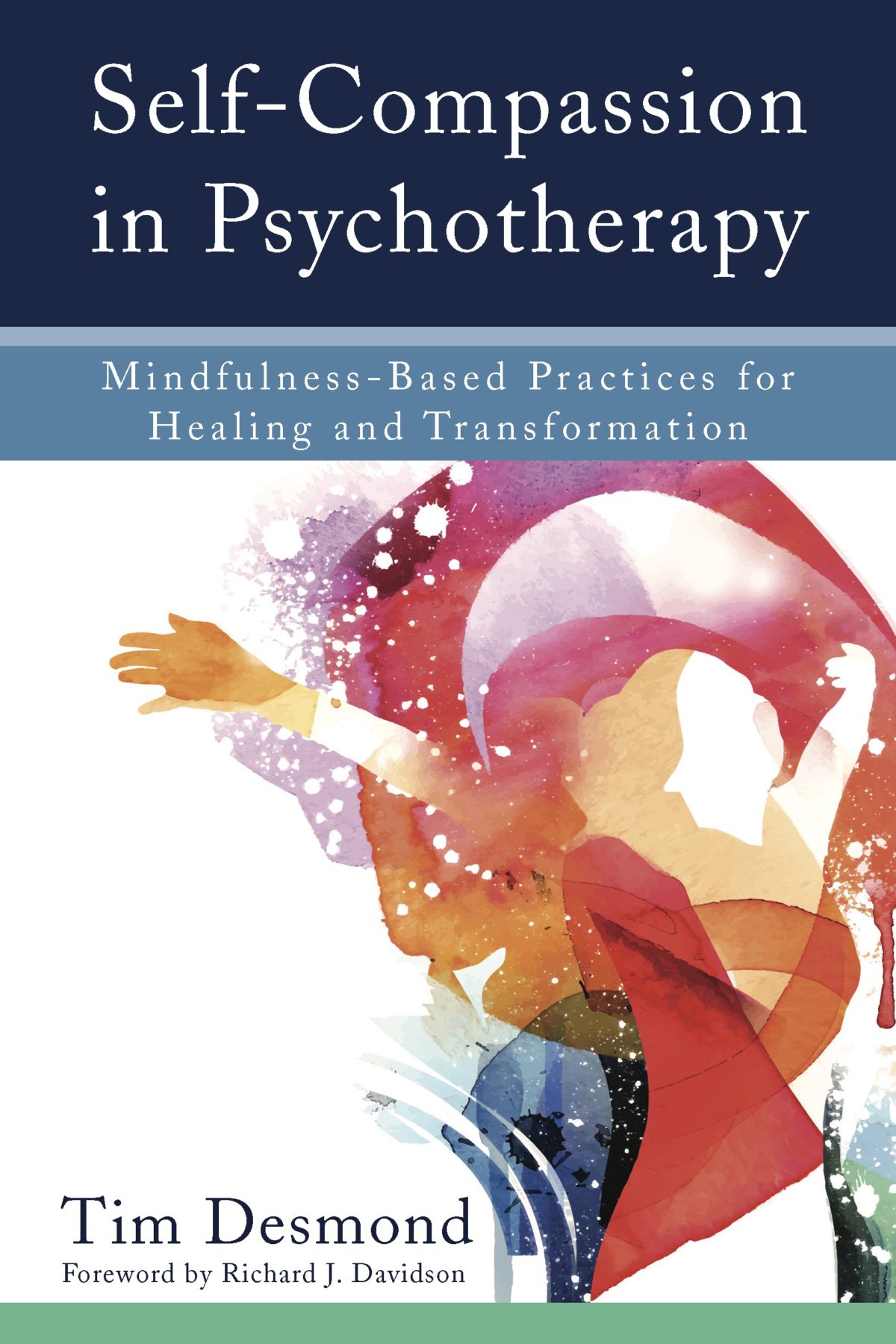
Self-Compassion in Psychotherapy
Mindfulness-Based Practices for Healing and Transformation
by Tim Desmond
W. W. Norton & Company, 2015
Hardcover, 256 pages
Reviewed by Renée Burgard LCSW
“Whenever any kind of suffering arises, even if it’s minor or subtle, recognize that it is there and send it compassion.” – Guidance given to the author by a senior monk in our Order of Interbeing
Taking a journey into Self-Compassion in Psychotherapy with Tim Desmond as our personal guide makes learning about the practice, art, and science of mindful self-compassion in therapy accessible and joyful. Scientific evidence for the deeply healing effects of self-compassion on suffering is made clear. Vividly described vignettes from the author’s therapeutic work with clients, and an excellent review of the research (on mindfulness and self-compassion, psychotherapy outcomes, basic clinical principles, neuroscience, and cognitive science) interweave in this book. The author is a gifted storyteller, and his writing is easy and compelling to read.
Desmond’s own mindfulness, self-compassion, and clinical experience are evident in clear, verbatim transcripts of client sessions. He brings each client to life with affection and insight, and offers a simple step-by-step process for therapists to use each vignette as a guide. Every story reveals a facet of self-compassion that offers specific healing practices. He shares original practices he has created, ancient Buddhist practices he has adapted, and practices created by modern teachers.
The book begins by defining self-compassion: “Self-compassion is intimately related to the practice of mindfulness … (as Thay says) … you cannot have mindfulness without compassion, and the practice of compassion always begins with compassion toward oneself.” The author notes, “Researchers now understand that self-compassion is a skill that can be strengthened through deliberate practice, and that it is one of the strongest predictors of mental health and wellness.”
He explores important differences between self-compassion and self-esteem, and points out that self-esteem is based on a value judgment, comparing ourselves with others, judging ourselves and others. “On the other hand, when we focus on self-compassion, it doesn’t really matter how we compare to other people. What matters is kindness and seeing ourselves clearly.”
Desmond provides a guide for “unlocking a client’s natural compassion” and “using compassion to heal and transform suffering in the past and present.” He offers clear, practical ways to help clients work with self-criticism (common in Western clients); for treating trauma, addiction, and psychosis; and for overcoming clinical roadblocks. The book ends with a chapter describing compassion practices for therapists. Without compassion for ourselves, we therapists may be unable to share true compassion with our clients, the most healing gift we can offer.
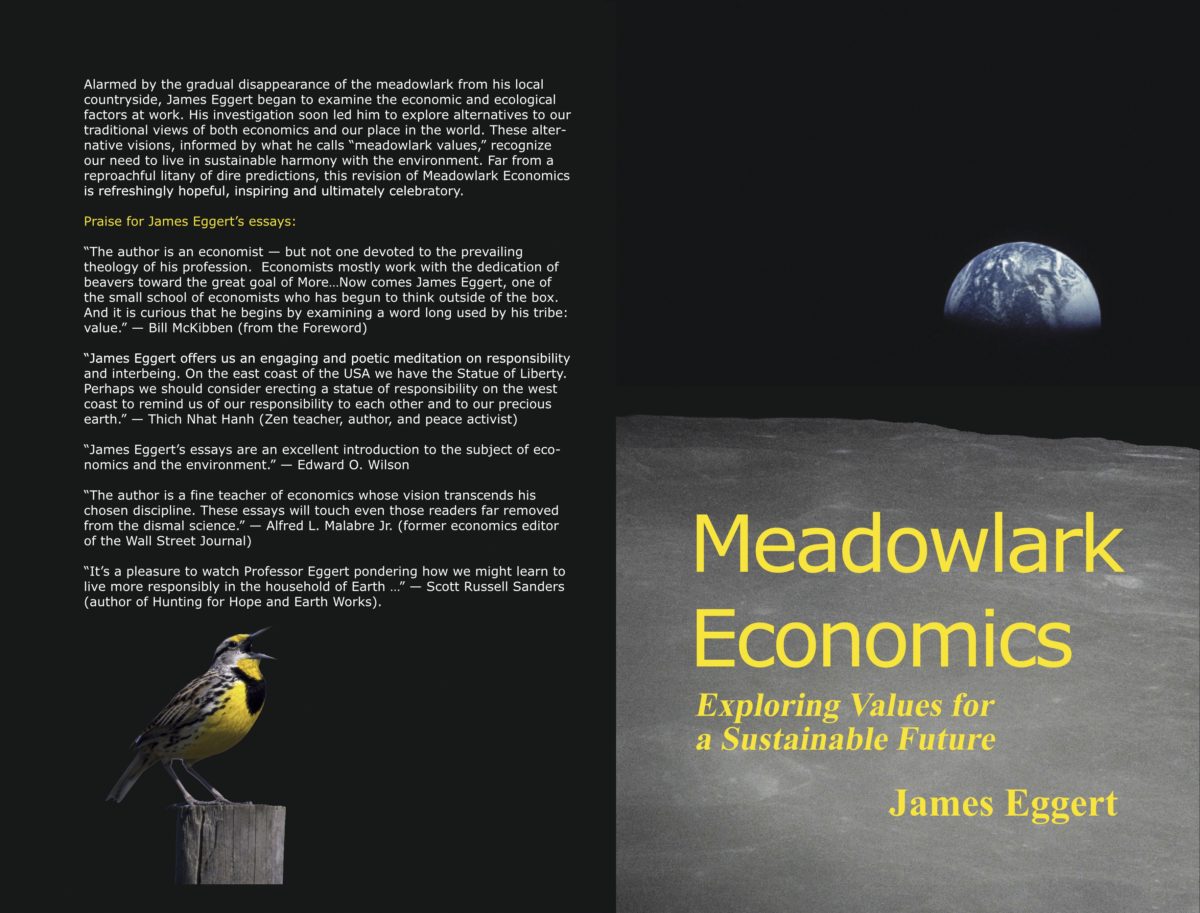
Meadowlark Economics
Exploring Values for a Sustainable Future
by James Eggert
North Atlantic Books
(Booklocker.com), 2015
Paperback, 150 pages
Reviewed by Kaveh Monshat
“What is wealth? What is value?” James Eggert asks in the introduction to his collection of essays. He urges us “to expand on the common monetized definition of wealth” and “consider ecological and community values or add a dose of the philosophical and political, the spiritual and scientific.” Reading the introduction, I could not help but gratefully smile at my already princely wealth, and was drawn into valuing the few remaining meadowlarks in the author’s rural surroundings.
An acclaimed professor of economics, Eggert writes as an inspiring educator with a passion for ecology. He invites us to be in touch with our hearts, joyous at Mother Earth’s grandeur. His writing style is direct, heartfelt, and deceptively simple: “Share the beauty, share the evening’s friendship and wonder while witnessing the moment, this moment in the here and the now.” While familiar to our Sangha, the book’s tone could be deliciously subversive for a budding economist straddling the fence between GNP (Gross National Product) and GNH (Gross National Happiness)!
Refreshingly balanced, Eggert points out what is helpful about orthodox economic science (e.g., counter-recessionary measures) or even a market economy (e.g., efficiency and inventiveness), while making a compelling case for economists to take a broader view of what is valuable. He encourages policymakers to include “wisdom and insights from the great spiritual traditions” in their deliberations and, quoting Thay on interbeing, he invites them to consider the impact on the “health of the environment … and local communities, and ... liveable neighbourhoods.” He envisions a less destructive, “more natural, more balanced capitalism,” in which conservation, renewable energy, and recycling are inherent. “Like the native prairie,” he wonders, “can we find a more harmonic, natural equilibrium that abounds in beauty, balance, and biodiversity?”
This anthology is both an invitation to a caring connection with nature and an ode to deep human values. The author journeys away from economics to illustrate these, with heartwarming essays on the joys of high jumping, amateur astronomy, and craftspersonship. The economics pieces would particularly interest readers unfamiliar with the critique of mainstream thought as narrow and shortsighted. The book left me hungry, however, for details on a workable bridge between our current economic system and a humane alternative.
In a book focused on nature’s beauty, I missed the presence of pictures, but Eggert’s touching, persuasive words will serve as a gentle mindfulness bell when I next take a country walk, all the more curious to spot meadowlarks, whose “song is pleasing, their color and swoop-of-flight enchanting.”
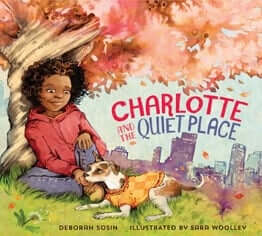
Charlotte and the Quiet Place
by Deborah Sosin
Plum Blossom Books, 2015
Hardback, 40 pages
Reviewed by Natascha Bruckner
Charlotte and the Quiet Place is a beautiful book for children and for anyone who is looking for peace and quiet in a noisy world. The story reminds me of Thich Nhat Hanh’s way of teaching: a refreshingly simple tale delivers timeless truth that, if put into practice, is profoundly liberating.
Deborah Sosin tells a compelling tale about Charlotte, who desperately wants to get away from the TV, barking dogs, roaring subway, and other noise in her city environment. Written with alliteration and onomatopoeia, the story springs to life on each page. “On the playground, the swings creak, squeak, and rattle. Even in the library, which is supposed to be a quiet place, the children giggle, yammer, and yell. Where can Charlotte find a quiet place?”
Then Charlotte chases her runaway dog and finds herself in a silent forest grove. As she becomes fully aware of her breathing, she arrives at a quiet place inside herself. It is “a place deep in her belly, where her breath is soft and even, a place deep in her mind, where her thoughts are hushed and low, a place as quiet as the small silence on the very last page of her favorite book, the silence right after ‘The End.’” From then on, she has a peaceful place to rest, even in the midst of her noisy home, school, and neighborhood.
Sara Woolley’s glowing, lively illustrations pull us into Charlotte’s world. We literally see the noise that bombards her—sharp stars shoot out of the TV, red lightning bolts vibrate from the jackhammer, and swirling clouds rise from the hissing radiator. Charlotte’s beautifully drawn facial expressions show her evolution from desperate distress to the unperturbed, serene smile of a buddha. The “hooo-ahhh” of her mindful breath is a refrain that dances across the page in graceful calligraphy.
My seven- and eleven-year-old nieces thought this book was “calm,” “thoughtful,” and “awesome.” My three-year-old niece also loved the story when her grandma read it to her, because it reminded her that she had recently learned how to take a deep, slow breath when she felt upset.
Deborah Sosin’s story can be a helpful support for children, especially when they are overwhelmed by outer noise or struggling with the inner noise of anger, fear, or despair. The tale reflects a journey home to the still, calm refuge that abides in each of us. In a clear and accessible way, this book offers a fundamental and potentially life-changing teaching on awareness of breathing as a path to deep inner peace.

